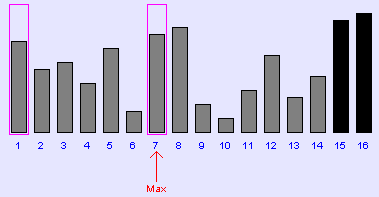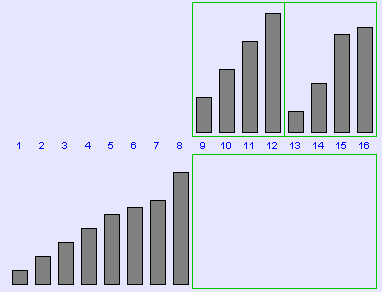
15-110 Fall 2010 Quiz 1
10 Minutes
* No calculators, no notes, no books, no computers.
* Show your work. Correct answers
without supporting calculations will not receive full credit.
1.
(30 pts) Convert 42 from decimal to binary.
2.
(20 pts) Binary search requires at most how many
guesses to guess a number between 1 and 20?
3. (30 pts – 5 pts each) True/False (circle one)
A.
If a binary number is even, then its leftmost digit
must be a 1.
TRUE FALSE
B.
Most computers represent numbers internally using
decimal (base 10) digits.
TRUE FALSE
C.
Selectionsort requires O(NlogN) steps.
TRUE FALSE
D.
For large values of N, log2N is much smaller than N
TRUE FALSE
E.
When looking for a
name in an unsorted list, it is generally faster to use linear search
than it is to first sort the list with mergesort and then use binary search on
the sorted list.
TRUE FALSE
F.
The sum 1 + 2 + … + N is O(N)
TRUE FALSE
4. (20 pts) Short Answers (Sorting)
A.
(10 pts) In this trace of selectionsort, which are the
next two elements to be swapped?

B.
(10 pts) In this trace of mergesort, what is the next
element to be copied into the temp list?

5. Bonus/Optional (up to 5 pts)
A.
(2.5 pts) About how many digits are required to
represent a number N in base 13?
B. (2.5 pts) Any positive integer less than 1 billion can be represented using only one digit in base 1 billion. Briefly, why can’t we use this as the basis for an efficient way to represent numbers?